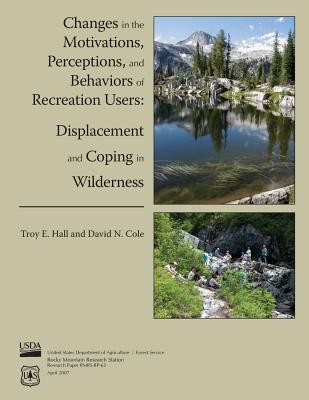
- We will send in 10–14 business days.
- Author: United States Department of Agriculture
- Publisher: CreateSpace Independent Publishing Platform
- ISBN-10: 1511540001
- ISBN-13: 9781511540001
- Format: 21.6 x 28 x 0.2 cm, softcover
- Language: English
- SAVE -10% with code: EXTRA
Changes in the Motications, Perceptions, and Behaviors of Recreation Users (e-book) (used book) | bookbook.eu
Reviews
Description
We describe how wilderness visitors perceive changes in wilderness use, impacts, and management. We examine how visitors have responded to change, both behaviorally and cognitively. The study was based on a sample of visitors to 19 Forest Service wildernesses in Oregon and Washington. Many respondents said the types of wilderness trips they take have changed since their earlier wilderness trips. Most perceived adverse change. Use has increased (particularly day use), resulting in crowding and a widespread sense that these places seem less like wilderness than they did in the past. Most of these visitors learned to cope with these adverse changes by either adjusting the way they think about these places or by adjusting their behavior. Cognitive coping, particularly rationalization, is very common. Most visitors do not consider changing conditions to be very problematic, probably because their coping mechanisms are successful. This explains lack of support for management actions that restrict access. Very few visitors cannot cope with crowded conditions. Displacement of visitors away from crowded places does not seem prevalent enough for concern about increased crowding and biophysical impact in places in wilderness that are currently lightly used or the validity of on-site visitor surveys.
EXTRA 10 % discount with code: EXTRA
The promotion ends in 18d.13:54:49
The discount code is valid when purchasing from 10 €. Discounts do not stack.
- Author: United States Department of Agriculture
- Publisher: CreateSpace Independent Publishing Platform
- ISBN-10: 1511540001
- ISBN-13: 9781511540001
- Format: 21.6 x 28 x 0.2 cm, softcover
- Language: English English
We describe how wilderness visitors perceive changes in wilderness use, impacts, and management. We examine how visitors have responded to change, both behaviorally and cognitively. The study was based on a sample of visitors to 19 Forest Service wildernesses in Oregon and Washington. Many respondents said the types of wilderness trips they take have changed since their earlier wilderness trips. Most perceived adverse change. Use has increased (particularly day use), resulting in crowding and a widespread sense that these places seem less like wilderness than they did in the past. Most of these visitors learned to cope with these adverse changes by either adjusting the way they think about these places or by adjusting their behavior. Cognitive coping, particularly rationalization, is very common. Most visitors do not consider changing conditions to be very problematic, probably because their coping mechanisms are successful. This explains lack of support for management actions that restrict access. Very few visitors cannot cope with crowded conditions. Displacement of visitors away from crowded places does not seem prevalent enough for concern about increased crowding and biophysical impact in places in wilderness that are currently lightly used or the validity of on-site visitor surveys.


Reviews